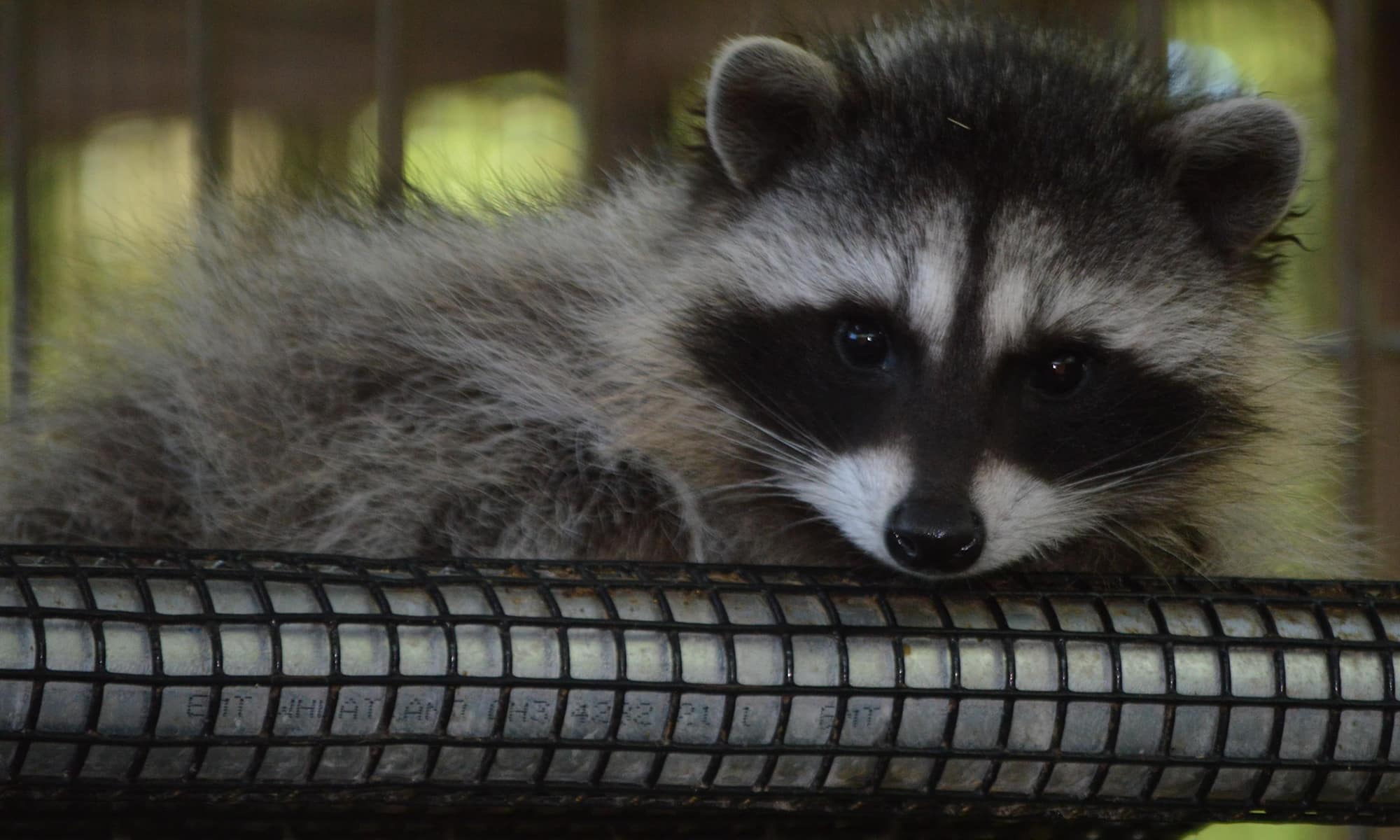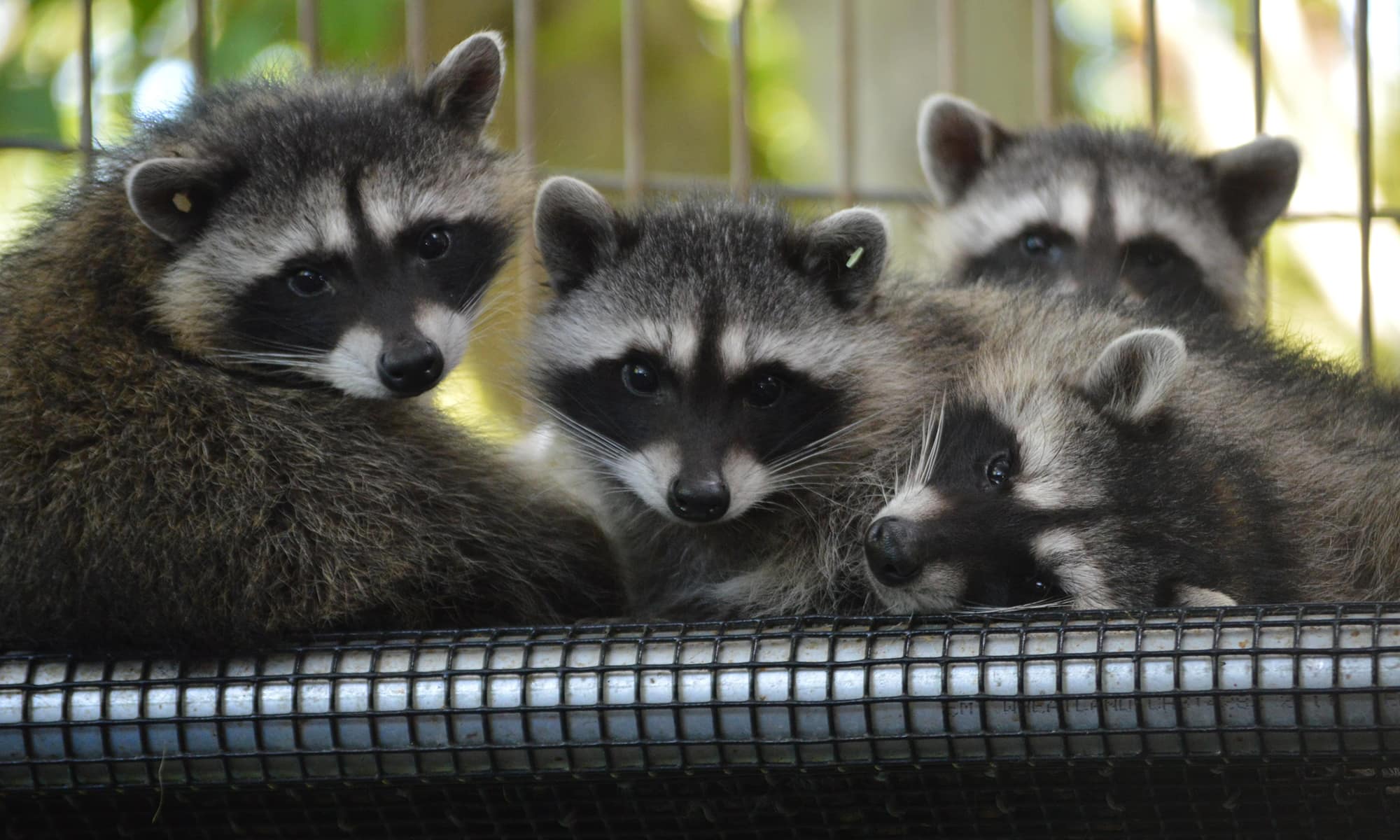Adopting a Cat
Please enjoy this video from Jackson Galaxy, a well-known cat behaviorist and host of...
Read moreRaccoons (Procyon lotor) are widely spread across North America, extending from Mexico into parts of Canada and almost continuously between both coasts. Raccoons dramatically increased in density beginning in the 1940s with a concomitant increase in distribution. Today they occur in the mountains and deserts where they were previously rare or absent.
During the 20th Century, Raccoons were introduced to other parts of the globe and can be found in countries like Germany, Russia and Japan.
Did you know? There are six other species of raccoons, most of which live on tropical islands.

Raccoons are categorized as medium-sized carnivores. They have a stocky torso and short limbs. Their hind legs are longer than their front legs so they have a hunched appearance. Their forefeet have five dexterous toes, allowing them to grasp and manipulate food and other items. They have a mask of black fur that covers their eyes and a ringed tail. Adults can weigh between 15 and 40 pounds and are 23 to 37 inches in length.
Did you know? Carl Linnaeus first placed Raccoons in the genus Ursus, categorizing them with bears.

Habitat
Historically found in forests, wetlands and along river and stream corridors, the highly adaptable Raccoon has learned to thrive in close proximity to humans. Now Raccoons are commonly found in suburbs and even busy cities.
Dens
Raccoons make dens in hollow trees, rock crevices, or burrows dug by other animals, and in storm sewers, crawl spaces, chimneys and attics. Except during extreme weather or when a mother is denned with her young, Raccoons do not occupy a den for more than one or two days. Females who are disturbed will often move their young to new dens. Raccoons do not hibernate, but they do live off stored body fat when food is scarce during the winter.
Breeding season extends from late winter through early spring. Females generally give birth between April and June to a litter of three or four babies, on average, called kits. The kits remain in their birth den until they are about seven weeks old, at which point their mother moves them to a series of alternate dens. In some parts of the country, young Raccoons spend their first winter with their mothers. In Western Washington, many disperse from their mothers in the fall.
Being opportunistic omnivores, Raccoons will eat just about anything, but they are fond of creatures found in water including crayfish, crabs, frogs and fish. They also eat fruit, vegetables, nuts, insects and small animals. They will readily take advantage of improperly stored garbage and pet food.
Did you know? Even though Raccoons are classified as carnivores, in most systems plant foods constitute the majority of their diet in all four seasons.

Though they are primarily nocturnal, Raccoons can be active during the day. They were also once thought to be solitary but new research suggests they congregate in gender-specific groups. Raccoons have very good hearing and have excellent night vision, but their extremely sensitive sense of touch is what sets them apart from other carnivores. They are constantly feeling around and touching everything. The highly developed nerves in their forepaw pads and their manipulative abilities help them to identify items. Their forepaws are almost like a second set of eyes. They will often rub and roll objects in their hands will even rub their hands together when they are not holding anything.
Raccoons are often seen rolling their prey around in the water, but contrary to popular belief, Raccoons do not wash their food before eating it. Biologists have recently described the behavior more as feeling rather than washing. Researchers have found that Raccoons’ forepaws are even more sensitive when wet. Moistening their paws helps them better identify objects in their hand as being food or not.
Raccoons are also extremely intelligent and good at solving complex problems. Some measures of intelligence have placed Raccoons above cats but below primates in their ability to distinguish between objects. They have exceptional memories and can remember the solution to tasks for up to three years without reinforcement.
Did you know? Raccoons can make over 51 different sounds.
Once habituated to people, Raccoons can become bold, and their presence, especially in large numbers, can pose problems for home and landowners. The most effective way to deal with Raccoons is to modify your property so that they will not be attracted to sources of food and shelter you have created.
Never feed Raccoons
Dispose of food scraps and trash in a metal can with a tight lid. Use a trash can with locking handle clasps, or secure it with a bungee cord or chain.
It is best to feed cats and dogs indoors. If you have no choice but to feed your pet outside, pick up all food and water bowls, including leftovers and spilled food, as soon as your pets have finished eating. Do not leave bowls or food scraps outside at night.
Raccoons sometimes raid gardens for fruits and vegetables, particularly grapes and corn. By using bright lights, especially those activated by motion, or by creating noise disturbances when Raccoons are present, you may be able to deter them until crops are ready to harvest.

Sometimes female Raccoons may use chimneys as dens to give birth and care for their young. Prevent this from happening by capping all chimney openings. If you suspect Raccoons are present, do not try to smoke them out.
Raccoons may also seek shelter under porches, in crawl spaces or in attics, where they can gain access through loose boards or large holes. If you think Raccoons are living in these spaces, assume there are young in there from early spring through summer. Wait until the babies are old enough for their mother to move them before you take any steps to force them out.
Once you are positive there are no young present, drive Raccoons away by putting up bright, flashing lights, turning on a radio set to a talk station, and hanging mesh bags filled with apple cider vinegar soaked rags. When you think the animals have left, tack a sheet of plastic over the entry and check later to see if animals have broken through it. Be sure to leave the light and radio on until there is no sign of activity, then seal the entry permanently.
Occasionally, Raccoons will venture into houses through pet doors when they smell food on the other side. Stay calm, close surrounding interior doors, leave the room and let the animal find his way out of the pet door or out of an open door or window. Lock pet doors at night or install a door that is electronically activated by a collar your pet wears. Never leave pet food near the opening.
Burke Museum. January 6, 2016. Mammals of Washington: Raccoon.
Feldhamer G.A., Thompson B.C. & Chapman J.A. (Eds). (2003). Wild Mammals of North America, Biology, Management, and Conservation (2nd ed.). Baltimore MD: The Johns Hopkins University Press.
Washington Department of Fish and Wildlife. January 5, 2016. Living with Wildlife: Raccoons.
Please enjoy this video from Jackson Galaxy, a well-known cat behaviorist and host of...
Read moreHow much will it cost to care for a new animal companion? It’s important to...
Read morePlease enjoy this blog post from Victoria Stilwell’s positively.com website....
Read more